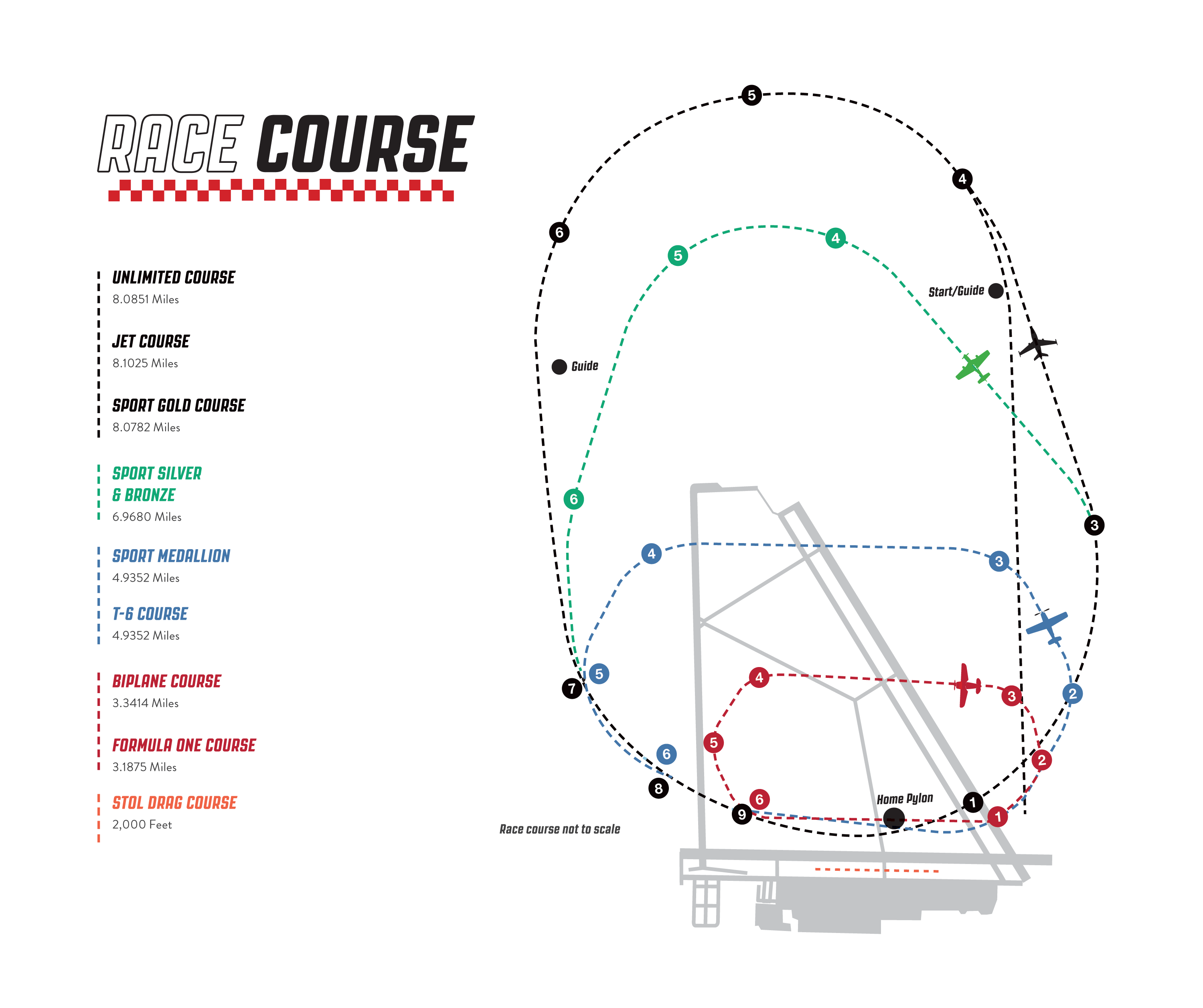The Course
It’s the place where all the action happens. It’s the place where champions are forged. The course at the National Championship Air Races is actually several courses overlaid on the same piece of ground. The various courses are roughly ovoid with seven to ten pylons throughout the course, plus additional guide pylons. All of the courses share a southern stretch that runs along the north side of Stead Field’s east-west runway, directly in front of the pits and the grandstands.

The pylons are actually telephone poles about 50 feet tall [the “sticks”], with specially made, marked drums [the “cans”] mounted at their tops. Many of the pylons have brightly painted panels to increase their visibility to pilots, who may be traveling anywhere from 150 to over 500 mph as they circle the race course.
The Home Pylon, clad in blue-and-white checkered panels, marks the finish line for every lap and race. It is attached to a concrete pad by removable large pins so the pylon can be swung down and laid on the ground, which is where it spends all of its time, except during the Pylon Racing Seminar in June and Race Week in September when it stands just across the runway from the Reserved Seating Grandstands.
Guide pylons are located along the longer legs of the Unlimited, Sport, and Jet Class race course to provide pilots additional clues as to the best line to fly towards the next pylon. Manning each pylon on the race course, and positioned at various other locations to report deadline cuts or other infractions of the race rules, are the pylon judges and members of the contest committee. Many of the pylon judges have been in the role for decades, and as a group, the pylon judges comprise the most experienced volunteers at the Air Races.
Pylon judges endure long hours “at the sticks” in all kinds of weather. Their main job is to ensure that racing aircraft remain to the outside of the pylons and above the minimum altitude prescribed in the rules. During each race, the judges gather at the base of each pylon, looking directly up through the can mounted on the top. If any part of a racing aircraft appears “inside the can” a pylon cut has occurred.
If at the end of the race, the judges at that pylon unanimously agree that a cut has occurred, they report the aircraft’s race number, which pylon was cut, and on which lap to the scorer by radio. The scorer then makes adjustments to the offending aircraft’s official time and standing in the race, according to the penalties described in the rules for that racing class.
The Pits
The Pits give you an up-close experience with the pilots, planes and crews. Roam amongst the incredible aircraft while enjoying the races and aerobatic performances. Row after row of race planes and their crews are accessible and you can be in the middle of the action while they prep for their next race!
Pit passes take you beyond the race and provide you an exclusive experience with behind-the-scenes action. To get pit passes for the next National Championship Air Race, visit our Get Tickets section.
